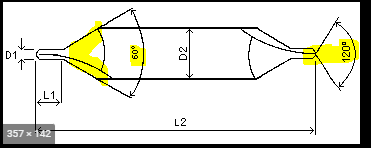- Joined
- Sep 24, 2012
- Messages
- 495
I'll be marking the hole locations with transfer punches. The hole locations will be guided by other pre-drilled parts which need to be bolted to the steel plate that I'm drilling. I'll clamp the pre-drilled part in the desired spot on the steel plate and use my transfer punches to mark a small spot on the steel plate. Once I've got all 12 spots marked, I'll take the steel plate and clamp it in position under the drill press quill. Then, I have a homemade piece of drill rod sharpened to a fine pencil point that I'll chuck up into the drill press. I just lower the quill and wiggle the plate's position until the "steel pencil" is pointing exactly to the transfer punch mark. Once I've got it where I want, I'll replace the steel pencil with a spotting drill, and drill a shallow hole - and follow up with the final drill size. It's stupid and inefficient, but I'm retired and patient.If you are doing the work on a drill press, how are you doing the layout? You don't have leadscrews and dials....
If you are scribing lines and centerpunching, you do NOT want spotting drills (or center drills).
Think of it this way: on a mill, you use the dials to accurately put your target spot directly under the spindle. Then you use a spotting drill to make a dimple is accurately centered under the spindle before following it with a more flexible drill bit that hopefully follows the dimple. But with a drill press, your layout and center punch mark is the target. So a flexible drill that will find and follow the center punch mark is better than a stiff spotting drill that will follow the spindle centerline and ignore the center punch mark.
I've done similar projects before using the same methodology. It works great. Someday I'll buy another milling machine!
Some good ideas there! Thank you!one way that you can use center drills to spot a hole is to use a follow up drill that is the same diameter as the tip of the center drill. Essentially you're creating a piloted hole for a pilot, then you can follow up with your larger drill.
I also second using screw machine length drills - if you need any, I have lotsThat's all I've used, though I do have spotting drills now. As Dave ^ wrote, they're handy for adding a chamfer to the hole first, so that you don't need to go back and do it after drilling the hole.


